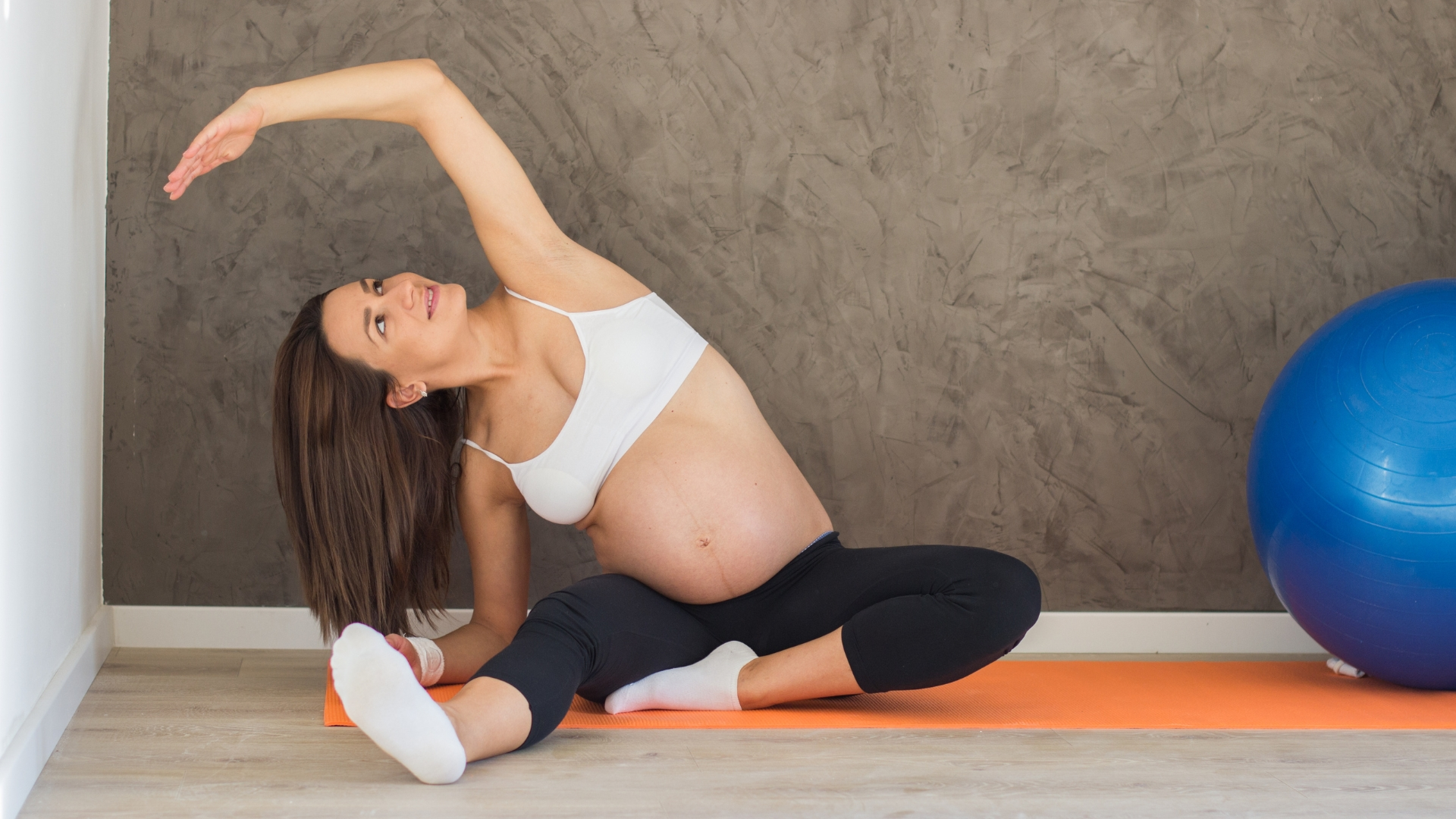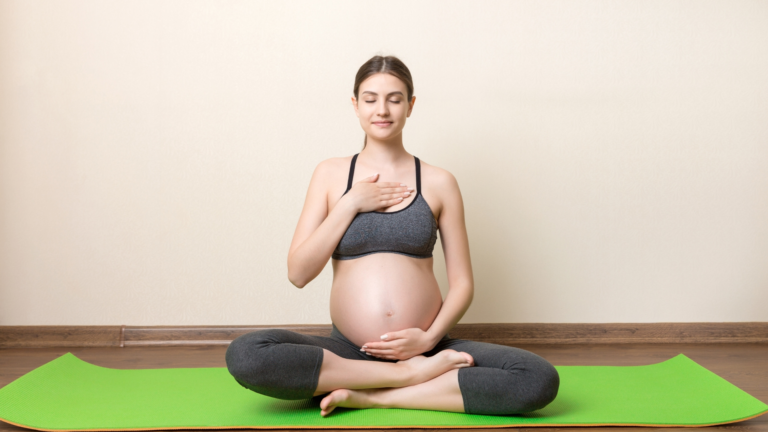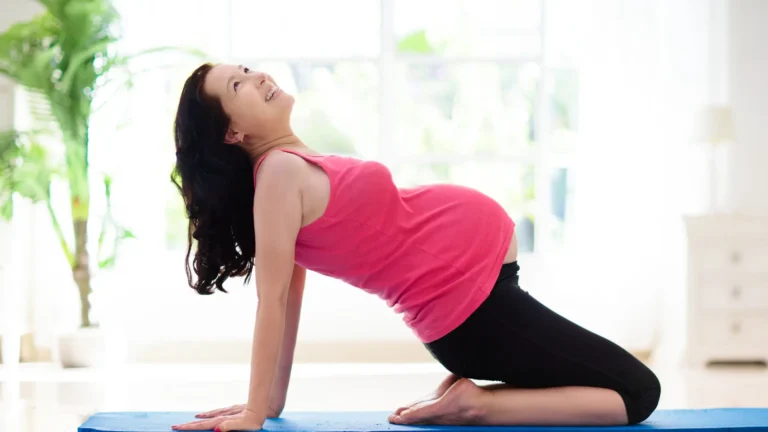Pregnancy Yoga For Third Trimester Pelvic Pain
As the pregnancy miracle unfolds, expectant mothers embark on a profound journey filled with anticipation, wonder, and a few inevitable discomforts. Among these, pelvic pain in the third trimester can disrupt the joy of expecting a child. However, within holistic wellness, a gentle yet potent remedy awaits pregnancy yoga. Beyond merely physical exercise, yoga offers a sanctuary for nurturing both body and mind, making it an invaluable companion for mothers-to-be.
In this blog, we’ll unravel the therapeutic potential of yoga during the third trimester, exploring how its blend of gentle movements, mindful breathing, and relaxation techniques can alleviate pelvic discomfort and foster a deeper sense of comfort and well-being. Join us as we embark on a journey of self-care and empowerment, embracing the transformative power of yoga amidst the journey of pregnancy.
Understanding Third Trimester Pelvic Discomfort
Pelvic pain during pregnancy is a prevalent issue, affecting around 80% of expecting mothers , during pregnancy. This discomfort often arises due to hormonal changes, increased pressure on the pelvic region from the growing uterus, and the body’s natural preparation for childbirth.

The pain can manifest in various forms, including:
- Symphysis Pubis Dysfunction (SPD): This condition occurs when the ligaments that normally keep your pelvic bone aligned become too relaxed and stretchy too soon before birth. This can lead to instability and pain in the pelvic region.
- Round Ligament Pain: As the uterus expands, the round ligaments that support it stretch, causing sharp, shooting pains in the lower abdomen or groin area.
- Sciatica: Pressure on the sciatic nerve, which runs from the lower back through the hips and down each leg, can cause shooting pain or numbness in the buttocks and legs.
- General Pelvic Discomfort: Aches and soreness in the pelvic area due to the increased weight and pressure of the growing baby.
While pelvic pain is a common aspect of pregnancy, it’s essential to address it proactively to maintain comfort and mobility during this transformative period.
The Healing Power of Yoga for Pelvic Discomfort
Yoga is renowned for its holistic approach to health and well-being, offering a blend of physical postures, breathing techniques, and mindfulness practices. During pregnancy, yoga emerges as a gentle yet potent tool for managing pelvic discomfort.

Let’s delve into how yoga addresses this challenge:
- Strengthening and Stretching: Pregnancy yoga focuses on gentle stretches and strengthening exercises tailored to the needs of expectant mothers. These movements help to alleviate tension in the pelvic region, improve flexibility, and enhance overall muscle tone, providing much-needed support to the body as it accommodates the growing baby.
- Improved Posture: Many yoga poses emphasize proper alignment and posture, which can help alleviate strain on the lower back and pelvis. By cultivating awareness of body mechanics and encouraging optimal alignment, yoga promotes better posture throughout pregnancy, reducing the risk of pelvic discomfort.
- Pelvic Floor Awareness: Online pregnancy yoga classes often include specific exercises to engage and strengthen the pelvic floor muscles. These exercises not only help prevent issues like incontinence but also provide support to the pelvic region, reducing the likelihood of pain and discomfort.
- Stress Reduction: Pregnancy can be a time of heightened stress and anxiety, which can exacerbate physical discomfort. Yoga offers a sanctuary for relaxation and stress relief, incorporating breathwork and mindfulness techniques that calm the nervous system, ease tension, and promote inner peace.
- Preparation for Labor and Birth: Many yoga practices for pregnancy are designed to prepare the body and mind for the rigors of labor and childbirth. By cultivating strength, flexibility, and mental resilience, yoga empowers expectant mothers to approach the birthing process with confidence and composure.
To learn more about the benefits of pregnancy yoga, read “ Top Benefits of Pregnancy Yoga for Moms-to-Be ”
Yoga Poses for Third Trimester Pelvic Pain
Now that we understand the benefits of yoga for pelvic pain relief let’s explore some gentle yet effective poses that can be incorporated into your daily routine during the third trimester:
- Cat-Cow Stretch (Marjaryasana-Bitilasana): This dynamic movement helps to gently mobilize the spine, relieve tension in the back and pelvis, and promote optimal fetal positioning.
- Child’s Pose (Balasana): A soothing pose that gently stretches the hips, thighs, and lower back, providing relief from pelvic pressure and promoting relaxation.
- Bound Angle Pose (Baddha Konasana): This seated pose opens the hips, stretches the inner thighs, and encourages relaxation in the pelvic region.
- Supported Bridge Pose (Setu Bandhasana): Using a bolster or folded blanket for support, this pose gently stretches the hip flexors, releases tension in the lower back, and promotes pelvic alignment.
- Pelvic Tilts: Lying on your back with knees bent, gently rock your pelvis forward and backward, engaging the abdominal muscles and mobilizing the pelvis to alleviate discomfort.
- Wide-Legged Forward Fold (Prasarita Padottanasana): This standing pose stretches the inner thighs and hamstrings while providing a gentle release for the lower back and pelvis.
- Squatting Pose: Squatting helps to open the pelvis, relieve pressure, and encourage optimal fetal positioning. Use props like a yoga block or a stack of blankets for support if needed.
- Legs-Up-the-Wall Pose (Viparita Karani): This restorative pose promotes circulation, reduces swelling in the legs and feet, and provides gentle traction for the pelvis.
Enrolling in online yoga classes will help you in incorporating these yoga poses in your daily life to get rid of pelvic pain during the third trimester.
Practical Tips for Safe Yoga Practice
While yoga can offer numerous benefits during pregnancy, it’s essential to practice safely and mindfully, especially as your body undergoes significant changes.

Here are some practical tips to keep in mind:
- Consult with Your Healthcare Provider: Before starting any new exercise regimen, including yoga, it’s crucial to consult with your healthcare provider to ensure it’s safe for you and your baby.
- Listen to Your Body: Honor your body’s wisdom and listen to its cues during practice. If a pose feels uncomfortable or causes pain, modify or skip it altogether.
- Avoid Overexertion: Pregnancy is not the time to push yourself to your limits. Focus on gentle, mindful movement, and avoid overexertion or pushing beyond your comfort zone.
- Stay Hydrated: Drink plenty of water before, during, and after your yoga practice to stay hydrated and support your body’s needs.
- Use Props for Support: Props like yoga blocks, bolsters, and straps can provide added support and stability, making certain poses more accessible and comfortable.
- Mindful Breathing: Incorporate deep, mindful breathing into your practice to oxygenate the body, calm the mind, and promote relaxation.
- Practice Regularly: Aim for consistency in your yoga practice, even if it’s just a few minutes each day. Regular practice can yield cumulative benefits for your physical and mental well-being.
Conclusion
As pregnancy unfolds, so does a spectrum of experiences, from joy to discomfort. Pelvic pain in the third trimester can challenge even the most resilient expectant mothers. Yet, pregnancy yoga emerges as a gentle, powerful ally. Through its blend of mindful movement and relaxation, yoga offers relief from discomfort and promotes well-being. By embracing yoga’s therapeutic potential, mothers-to-be can navigate this transformative journey with greater ease and confidence. Remembering to listen to your body, practice safely, and cultivate self-compassion, may each yoga pose and breath bring comfort and strength as you prepare for the arrival of your little one. With each yoga pose and deep breath, you’ll feel more prepared and empowered for the beautiful journey ahead.




 WhatsApp us
WhatsApp us